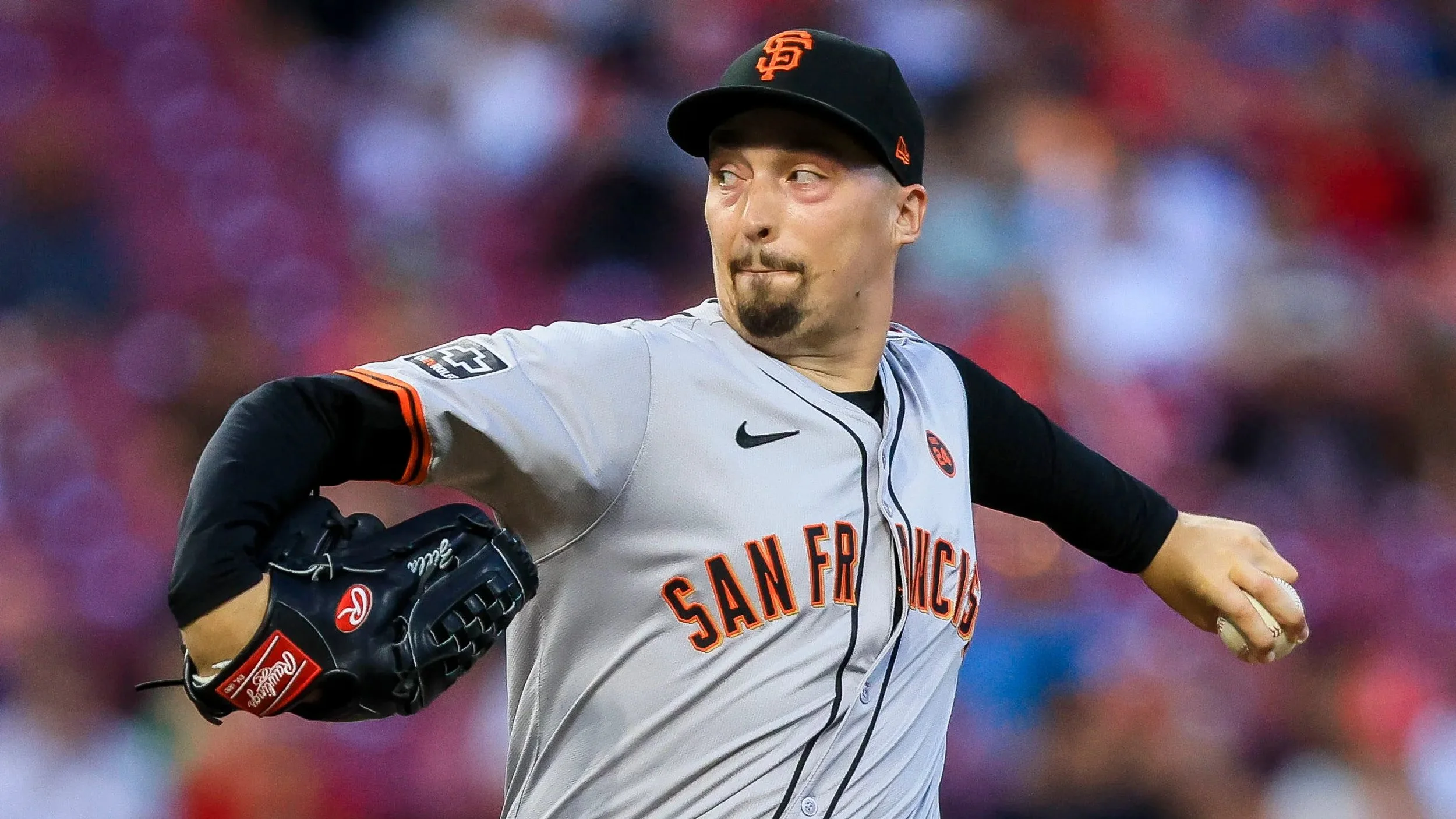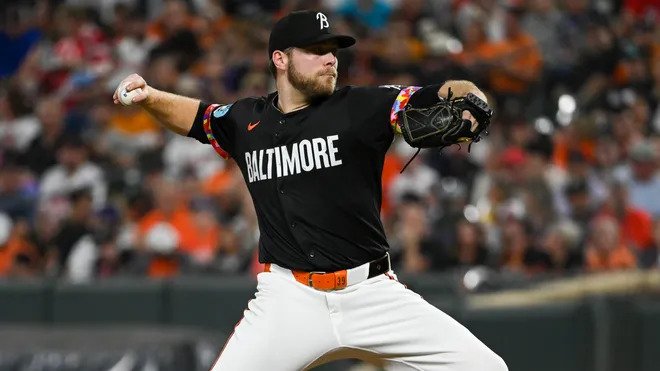Mark Whicker: Current starters makes you miss Abbott-Clemens, Morris-Smoltz showdowns
San Francisco Giant free agent LHP Blake Snell is at the top of most lists, but how big will his pay day be?
November 16, 2024
By Mark Whicker
Canadian Baseball Network
The essential Atlanta Braves, or most of them, have been able to put down stakes.
Matt Olson has a contract through 2029, Austin Riley through 2032. Ronald Acuna is a Brave through 2026 with options through 2028 if he wants. Sean Murphy is there through 2028, Michael Harris II through 2030.
But Max Fried, the guy who actually pitched the Braves to their 2021 world championship over Houston, has his stuff in storage. His contract ran out when the season did, at a comparatively reasonable $15 million. He is a free agent.
The Arizona Diamondbacks, on a smaller scale, have the same philosophy. They did pick up Eduardo Rodriguez from the Tigers and his $80 million, four-year deal that expires in 2027. But while they have extended Ketel Marte through 2027 and Corbin Carroll through 2030, they allowed Merrill Kelly’s two-year, $18 million contract to get to the option this fall. They picked up that option for 2025, at a nice price of $7 million.
It must be pointed out that the Braves made a commitment to Spencer Strider, the righthander who was the runaway leader in NL strikeouts in 2023 and had a 20-5 record. They gave him a six-year, $75-million deal through 2028 with a club option for the next season. Then Strider went nine innings in two starts in 2024.
Free-agent RHP Corbin Burnes, who pitched for the Baltimore Orioles this season.
The most interesting part of this free agent season, aside from Juan Soto’s upcoming haul, is what happens with starting pitchers. Three Cy Young winners — Shane Bieber, Corbin Burnes and Blake Snell — hit the market, along with Fried, Walker Buehler, Sean Manaea, Jack Flaherty and Yusei Kukuchi. Roki Sasaki, the Japanese beast who won’t command high-bracket dollars, is up there too. One would assume all of them will be able to provide for their children and their whole hometown’s children, but the game has changed and so has the financial planning. Baseball itself has devalued its starting pitchers on the field. It’s no coincidence that they’re getting devalued in the marketplace.
Snell was a free agent 12 months ago, too, coming off his Cy Young season in San Diego. He did not sign until March 18, two weeks before the opening of the season. The Giants got him for two years, and Snell was eligible to opt out of the second year, which he did. He got a $17 million signing bonus and a $15 million working wage. He did pitch a no-hitter and had an excellent 1.048 WHIP for the season, but he was 5-3 in only 20 starts. Now he’s out there again.
The other pitcher in purgatory last spring was Jordan Montgomery, the lefthander who helped Texas win the 2023 World Series. As a commodity, he lost heat throughout the winter, and the Diamondbacks had already played one regular season game before they signed him on March 29. Montgomery never caught up, going 8-7 with a 6.23 ERA. The Diamondbacks gave him $25 million for that and also a vesting option, after 10 starts, for $22.5 million this year. Rest assured that Montgomery is available. But the point is that he had the right to expect four or five years.
This is a different world. Time doesn’t spring forward for starters these days. It falls back.
Currently, only 29 pitchers have contracts that run through 2027. That’s less than one per team. Zack Wheeler of the Phillies will make $42 million that season. Some of the numbers make more sense than others. Logan Webb of the Giants hasn’t missed a start in three years and topped 200 innings the past two years. His deal runs through 2028, a year in which he will make $24 million. The Dodgers traded for Tyler Glasnow this year and will pay him $21.5 million in 2028, his last year. His WHIP was under 1.000 for the third time in four seasons. He also was limited to 22 starts and 134 innings. Both were career-highs.
Starting pitchers have never looked more like placeholders than they did in the 2024 postseason. Dodgers’ starters had a 5.25 ERA. The team won 11 games but the starters earned only four victories. Throughout the postseason, starters only had 14 wins overall. They averaged 3.98 innings per start, or a little fewer than 12 outs.
Relievers didn’t escape. There were 43 save opportunities in October. Only 25 were redeemed. The Dodgers’ Blake Treinen and the Royals’ Lucas Erceg were the only relievers who went 3-for-3.
If the Yankees had an advantage in the World Series, it was supposed to be the specter of Gerrit Cole, who makes $36 million per annum and will do so through 2028. Cole was very good in Game 1 but left after six innings, or three innings before Freddie Freeman struck. He wasn’t as good in Game 5 and, of course, was frozen on the grounder by Mookie Betts that tied the game, 5-5.
Those who run the game have pulled off quite a self-fulfilling prophecy. By minimizing the impact of a starting pitcher, they have figured out ways not to pay them. That’s easier than actually going into the underbrush and finding out why they all get hurt so much. But it allows a club to stack its staff with relievers, many of them too young in their careers to even get to arbitration, and then break out the offensive stars, who have a better track record of attendance.
Only three active pitchers ended 2024 with 200 or more career wins: Justin Verlander (262), Max Scherzer (216) and Clayton Kershaw (212). Cole is next, way back at 153. Heck, there are only 20 active pitchers who have 100 wins. Aaron Nola, whom the Phillies have tied up through 2030, is the youngest of those at 31. Despite the presence of Nola and Wheeler, who probably deserves the NL Cy Young this year, the Phillies didn’t escape the Division Series against the Mets.
Only six active pitchers have 2,000 or more innings. Verlander has 3,415. That’s 537 more than runnerup Scherzer. And Verlander only ranks 83rd all-time. Forget Cy Young. Greg Maddux retired with 5,008 1/3 innings. That’s more than 15,000 outs. Untouchable.
You don’t need to watch newsreels to see the change. Twenty years ago, Carl Pavano was 10th in innings pitched with 222 1/3. Livan Hernandez led with 255. This year, Seattle’s Logan Gilbert was the leader with 208 2/3. Only four pitchers got to 200. The 10th place guy was Dylan Cease, with 189 1/3.
Obviously, change cannot be restrained, nor should it be. It used to be permissible for a shortstop to hit .200 as long as he could pick it. Bullpens have become far more sophisticated and generalized, not just a place to dump ineffectual starters.
But when you see the B-12 shot that Paul Skenes gave Pittsburgh every time he pitched, and when you remember the great showdown between Jim Abbott and Roger Clemens at Angel Stadium in 1989, or even Jack Morris and John Smoltz going at it in 1991, you realize we’re losing a bit of the game’s theater, as defined by two men on a ledge. Do we really need more committees in our lives?


